In the green hills above Budapest, a train line runs between stations buried deep in the woodland. It’s not the rail fastest service in the world, but it’s one of the cutest.
Like any other railway it has ticket offices, diesel locomotives, signals, guards and a timetable. Unlike any other, this one is run by children.
With their smart red, blue and white uniforms, the youngsters of the Gyermekvasút railway, which marks its 70th anniversary in 2018, look the part.
They efficiently sell and check tickets and salute trains as they depart stations. They also look like they’re having lots of fun.
Under blue Hungarian skies, this retro little railway easily resembles something from a Wes Anderson film.
In fact, it’s a throwback to the days of communism, when Hungary, as a satellite state of the Soviet Union, created the Pioneer Railway to give children the chance to learn teamwork and responsibility.
Minors worked the railway under the supervision of adults. The engineers and the train drivers are grownups.
Nostalgia trip
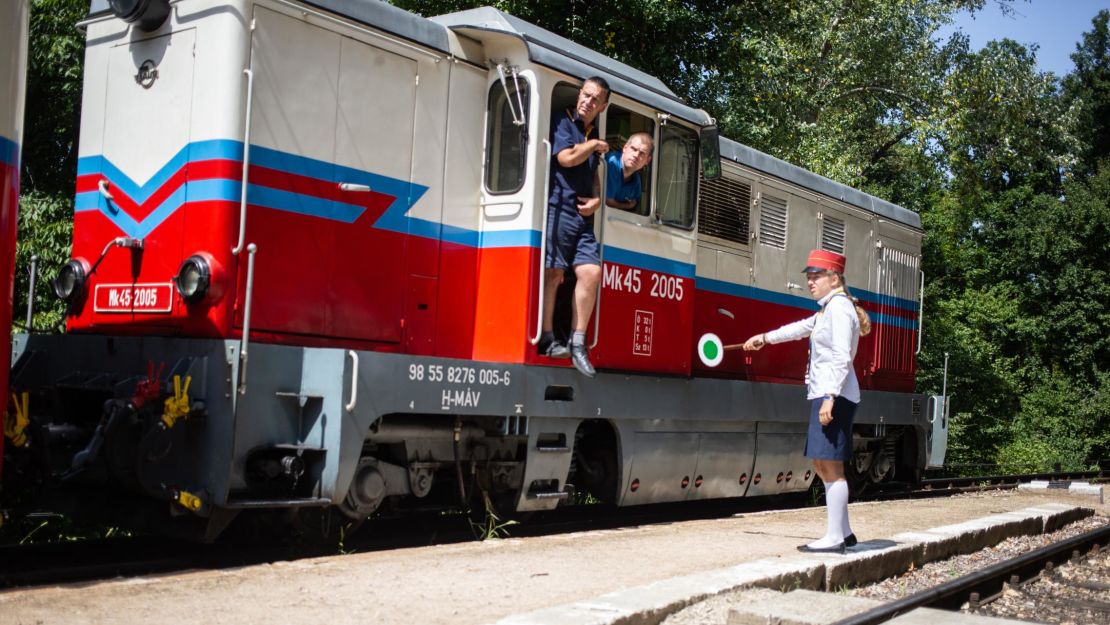
It still operates the same way today, just without the communist principles, rebranding itself as the Gyermekvasút, or Children’s Railway in English. Local kids get to work on the railway approximately every 15 days, even getting some lucky days off school.
For many Hungarian visitors, a trip on the narrow-gauge service is a reminder of their own childhoods.
On one recent trip with my Hungarian mother, we rode the last train of the day as the light began to fade. At each station, the kids hopped onto the red, blue and white train, filling up the carriage as their shifts ended.
One boy had a guitar and the railway children, their normally smart uniforms slightly disheveled after a day’s work on the line, started to sing.
“We sung these in the Pioneer Camp,” my mother exclaimed as the train chugged through the leafy woods.
Riding the Children’s Railway always brings her a wave of nostalgia, especially when the toy-like carriages roll into the station named Csillebérc, now home to an adventure park.
In the late 1960s, she spent a month at the Pioneer Youth Camp here – think summer camp with a socialist twist – as a reward for being a good student.
To get to the camp, young Hungarians rode through the forest on the Pioneer Railway, staffed by children, some as young as 10.
Scenic routes
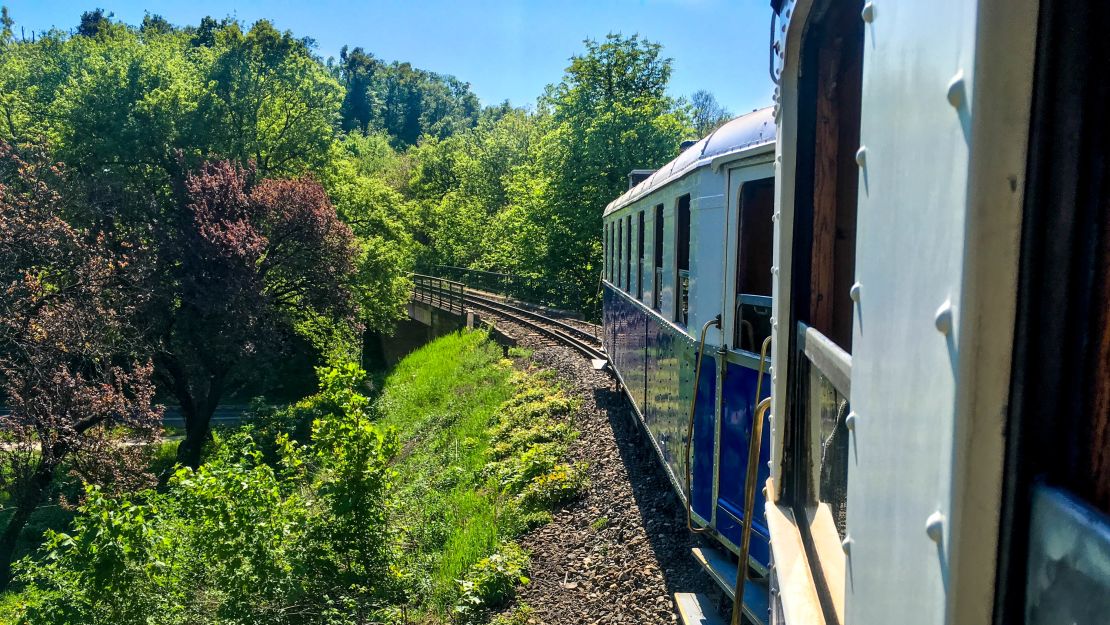
Today, there are two ways to get up to the 70-year-old railway.
The first is to take the 56 or 61 trams from Széll Kálmán or Móricz Zsigmond körtér to the end of the line in Hűvösvölgy, the other is to get off the same tram at Városmajor and take the cogwheel railway (line 60) to Széchenyi-hegy.
The good news is all routes are scenic, but taking the tram to the end of the line is highly recommended.
The route up to Hűvösvölgy winds through the leafy green valley past villas, dilapidated grandeur, and pastel green waiting rooms carved out of wood that would also fit in a Wes Anderson film (if it weren’t for the graffiti).
At the final stop, the turreted stairway leads up to the Children’s Railway.
The station at Hűvösvölgy still maintains its retro nostalgic glory. Social realism blends in with the vintage photos and bilingual signs in Hungarian and Russian.
Tickets, costing a few hundred forints (typically about $2-3), can be bought from the window from one of the children – who usually take the job so seriously it’s easy to forget you’re being served by a 14 year old.
If there’s time to kill before the train, the station’s small museum has communist relics from Pioneer Days, such as old uniforms and a huge ticket machine made out cast iron, along with cute interactive games to keep kids (the passengers, not the workers) entertained.
As the next train comes in, a childish voice echoes across the tannoy in Hungarian following the same jingle that can be heard in every rail station across Hungary.
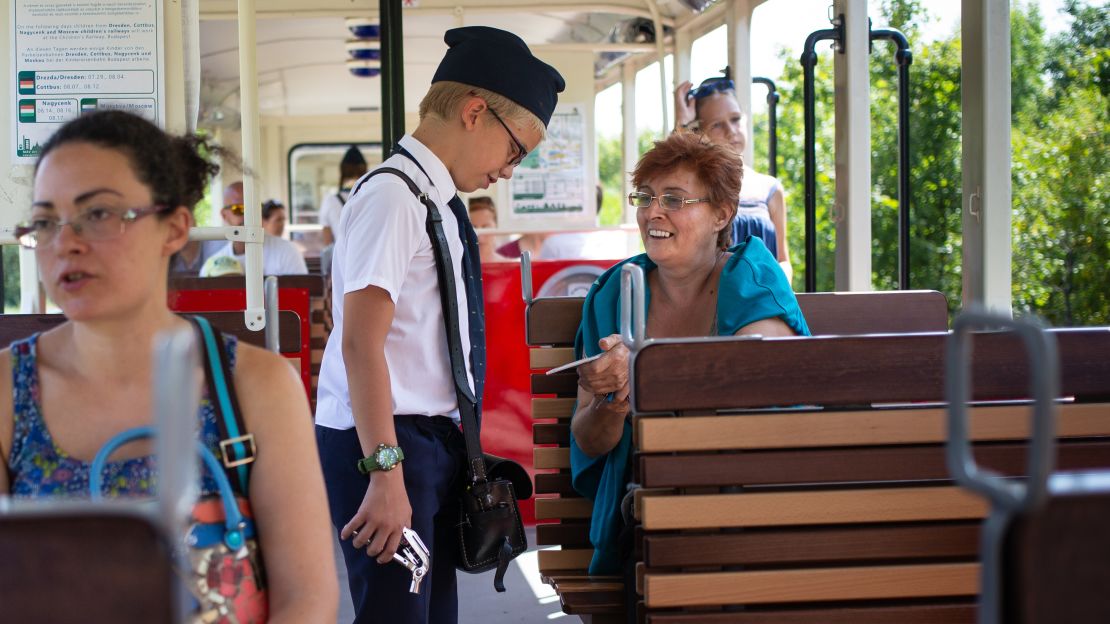
The train we board predates the usual red and white ones. Instead we haul ourselves up a royal blue locomotive decked out with wood benches under net luggage carriers, a wrought iron stove and pull-down windows.
Hurrying to catch it before departing, we get into the first carriage (annoyed to find we could have traveled first class in the next carriage with plush green velvet seats).
The train pulls out the station, as children in a navy blue uniform with red caps salute. Once we leave the platform behind, they relax back into more natural childlike poses.
Our ticket inspector, decked out in full navy attire, keeps up his adult role. He punches our tickets before sitting down, keeping perfectly straight and crosses his hands over his lap as he gazes out the window over the valley.
Saluting with pride
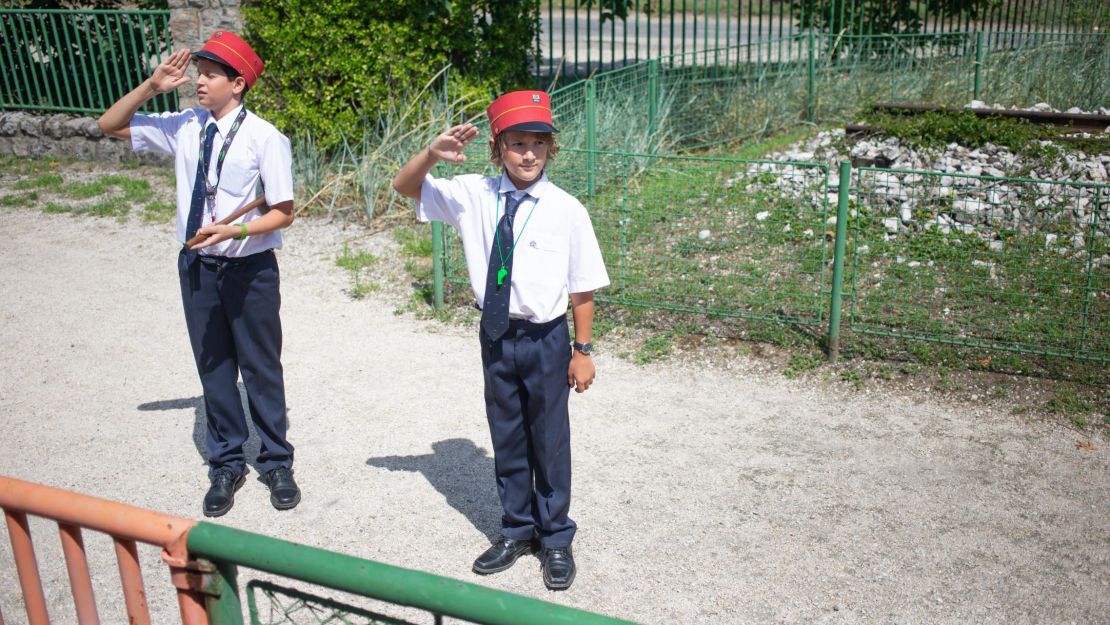
Sometimes childishness slips out when the children call out to each other from the window of the carriage after signaling and saluting.
“I’m damn hot,” one child says to the other, pulling at his cotton white shirt trying to fan himself as he rushes past the train with a yellow flag in hand.
At the next station a girl gets irate when one of the boys tramples all over the hat she dropped in the dust. Yet, whenever a train pulls in or out, they stand up straight and salute with pride.
Only the top students are considered for the railway, and those selected also take a training course and must pass railway worker exams.
For a year, the railway children go on duty every two weeks, getting excused from school on workdays, but only on the condition their grades don’t slip.
The train chuffs along for 11 kilometers through the woods and over the hills and takes between 40 to 50 minutes.
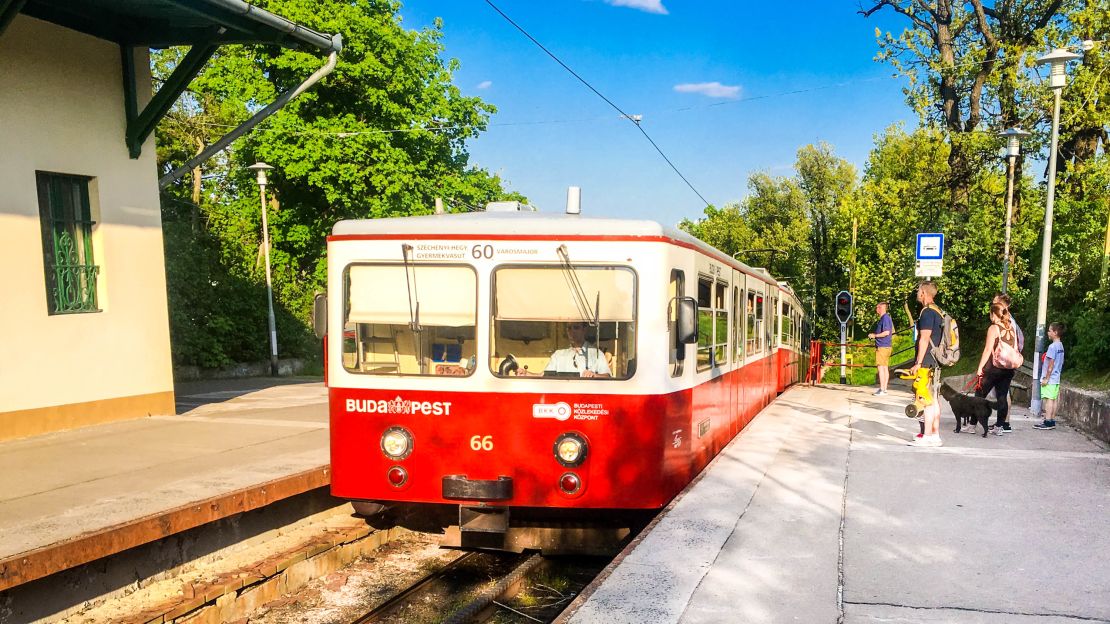
Passengers can get off along the way for hikes through the woods, or up to the Elizabeth Lookout – Budapest’s highest point — or ride the whole way from one station to the other.
Even without the novelty of the children and the railway’s retro charm, the ride through the hills is worth the trek to a side of the city where it’s easy to forget you’re within the boundaries of a European capital.
Those ending at the Széchenyi-hegy can ride the cogwheel railway down the hill, which will plunge through the woody villa clad Svábhegy back into town, looping back to the start.
Jennifer Walker is an Anglo-Hungarian writer and former physicist living in Budapest. She tweets at @JDWalkerWriter.
CNN Travel series often carries sponsorship originating from the countries and regions we profile. However CNN retains full editorial control over all of its reports. Read the policy.












